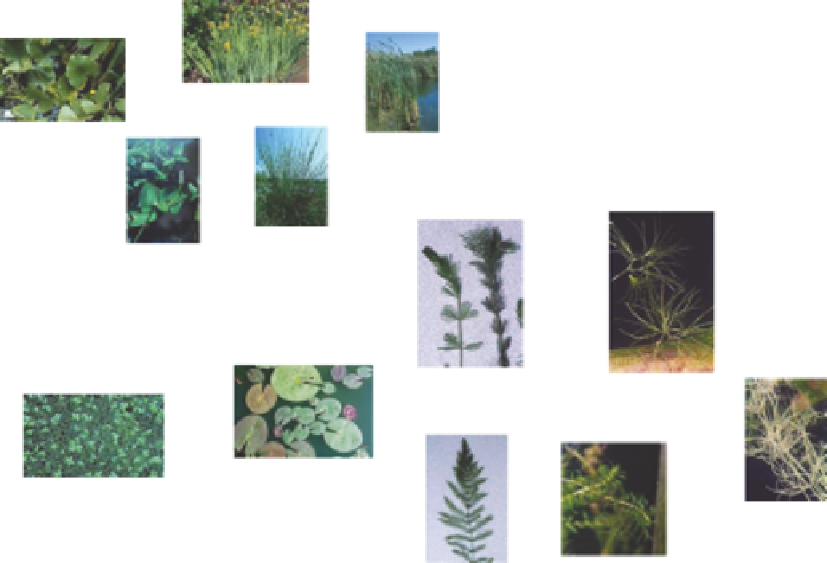Environmental Engineering Reference
In-Depth Information
Iris
Spatterdock
Cattails
Bulrush
Pickerelweed
(a)
Emergent
Water milfoil
Najas
Pond lilies
Duckweed and watermeal
Chara
(b)
Floating
Elodea
Coontail
(c)
Submerged
FIGURE 6.5
(a-c) Aquatic macrophytes. (Photographs from Ohio Pond Management Plant Identiication,
Ohio Department of Natural Resources.)
3. Free-loating species, such as water hyacinth and duckweeds, are typically not attached
to the substrate and often form mats that entangle other species in slow-lowing tropical
rivers.
4. Submerged species, such as Isoetes and Potamogeton, are rooted to the substrate, have sub-
merged leaves, and are located mid-channel to the point of insuficient light penetration.
Submerged species that are not rooted include the bladderwort.
The aquatic macrophytes are typically conined to areas of streams and rivers with limited cur-
rents and suitable substrates, such as pools, side channels, embayments, backwater areas, and con-
tiguous wetlands and, as a result, macrophyte distributions in rivers are often patchy (WOW 2004;
Figure 6.6). The distribution and abundance of macrophytes often vary seasonally.
In addition to contributing to primary productivity, macrophytes also provide an aquatic habitat
for a wide variety of organisms. However, as with other plants, excess nutrients can result in exces-
sive macrophyte growth that can impede navigation, and cause dissolved oxygen declines and other
water quality problems. Also, the growth and sloughing of macrophytes are not only impacted by,
but also impact on the hydraulics of rivers and streams, such as by increasing drag and essentially
reducing cross-sectional low areas.
6.2.4 I
nteractIonS
between
p
erIpHyton
, p
HytopLankton
,
and
M
acropHyteS
Periphyton, phytoplankton, and macrophytes commonly coexist and interact in a number of ways.
While all three consume and compete for water column nutrients, rooted macrophytes have the

Search WWH ::

Custom Search